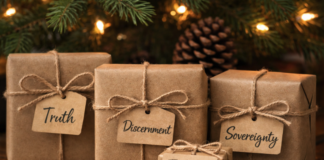
When it comes to family safety and home security, top-of-mind concerns usually involve crime or household accidents. However, environmental factors force millions of people to evacuate their homes or shelter in place every year. An emergency kit, also known as a survival kit, is the cornerstone of emergency preparedness for these situations. Assemble a well-thought out emergency kit, either in your home or in a travel-friendly “go bag”, to help you stay safe and sound.
While some locations face greater environmental risks than others, dangerous weather can strike anywhere. In 2018, the Federal Emergency Management Agency (FEMA) recorded 124 emergency declarations, which included fires, storms, flooding, high winds, mudslides, tornadoes, earthquakes and even volcanic eruptions. These events and related emergencies often result in the loss of electricity, water, heat, phone lines or other utilities. They may also prevent you from traveling, so plan accordingly using this list.
Emergency kit basics
Your basic preparedness kit should include everyday staples like water, food, essential toiletries, batteries and backup communication devices. The following recommendations are intended to last through relatively minor emergencies until your power can be restored or emergency personnel can reach you.
- Water: The Department of Homeland Security recommends at least one gallon of water per person per day for at least three days, for drinking and sanitation.
- Food: Assemble a three-day supply (or more) of nonperishable food items. Keep food in a cool, dry place with basic cutlery, including a can opener, easily accessible. If you’re sticking to the basics, choose food items that don’t need much preparation or heating. Some suggestions: granola or protein bars, peanut butter, jerky, nuts, cereal, dried fruit and canned items like legumes, fruit and tuna.
- Family first aid kit: At minimum, your first aid kit should include treatments for minor injuries (bumps, scrapes, cuts, burns, etc.) as well as general purpose over-the-counter medications like pain relievers, cold medicine, anti-diarrheal medicines (Immodium, Pepto-Bismol) and hydrocortisone cream. Create your own from scratch or opt for a preassembled kit. This all-purpose first aid kit represents a good value and includes plenty of kid-friendly items like junior band-aids and topical pain relief. No matter which kit you choose, you should always review its contents and supplement it with items that are relevant for your family. For instance, you might need allergy medicine like Benadryl or epinephrine pens or additional NSAIDs for chronic aches and pains.
- Medical items & prescriptions: The first aid kit prepares you to respond to new injuries and conditions, but anyone in your household with pre-existing conditions should also have a 7-day emergency supply of prescriptions and/or medical devices.
- Toiletries and sanitation items: Prioritize toiletries that you can use without water, especially if you rely on an electric water pump. Moist towelettes/wet wipes with plenty of sealable trash bags are good all-around use items. If you have an infant, baby supplies (diapers, rash cream, etc.) are of utmost importance. Also consider hand sanitizer, feminine hygiene products and toilet paper.
- Glasses and/or additional contact lenses with solution: Coping with an emergency is particularly difficult if your vision is compromised. Make sure to have backup glasses, contacts and contact solution if you have issues with your eyesight.
- Lighting: flashlight, lanterns, candles: Flashlights and camping lanterns are excellent options, as long as you include an ample supply of batteries. Hand-crank flashlights are an even better choice because they don’t require batteries at all. Energizer makes some of the best rated mini versions; this Thorfire flashlight is another great option, with features like solar power, waterproofing and various light settings.
If you stock up on candles, be sure to include matches or lighters, and use them extremely judiciously. Open flames present safety issues of their own. Use tip-proof, heat-proof candle holders and never burn a candle unattended.




- Backup cell phone chargers/battery: Cellular networks often remain up and running even when electricity is spotty. If you can keep your device charged, you can preserve a connection to the outside world. Car chargers can be useful in a pinch, as long as you have the resources to start and run your car. Backup battery packs are reliable, but keep in mind that they usually recharge your device only 1-3 times, depending on the pack size and the type of phone you have.
- Battery-powered or hand-crank radio: Though radios might seem old-fashioned, they’re the best tool for staying up-to-date on emergency broadcasts during a time of need. AM/FM radios are better than nothing, but they may not provide the best information during hazardous weather. Look for an emergency radio that supports NOAA weather radio. These types of receivers tune into specific public safety radio frequencies that broadcast comprehensive governmental weather news and alerts.
- Multipurpose tool or tool kit: A multi-tool or a small toolkit will help you respond to the environment. At the very least, keep a wrench and/or pliers on hand to turn off natural gas and damaged water valves. Hammer, nails, plywood, tarps and rope may be necessary to re-secure doors and windows. Plastic sheeting and duct tape are also handy reinforcements if the structure of your home is compromised.
- Pet supplies: Don’t forget your furry family members in your planning. Stock up on extra food, bedding and important medications.
- Whistle, maps and compass: Many security authorities recommend packing a high-decibel whistle into your emergency kit in case you need to signal for help. Local maps and a compass can also be lifesavers if you need to travel without your go-to GPS device.
- Emergency blankets or sleeping bags: During an emergency, you or your family members may need to recover from dangerous weather exposure. Heat-retaining emergency blankets or sleeping bags may function better in these situations than typical bedding.
- Personal documentation & cash: Keep copies of your family’s personal identification documents, emergency contact numbers and a stash of cash in the event of an emergency. All of these can help prevent undue delays in connecting you with the help and services you need. Store them in your household safe or in a waterproof bag or portfolio within your emergency kit.
Advanced survival kit items
There are several possible reasons to increase your level of emergency preparedness, many of them personal. Some people prefer to keep an elevated level of independence and preparation because they live in an isolated setting. Others just want maximum peace of mind. To increase your preparedness level from covering basic needs for a few days to enhancing your comfort and readiness for an extended period of time, start with the items listed above and expand on them as your priorities and resources allow. In some cases, “more” is simply better – more food, more water, more tools. In other cases, consider additional strategic investments in the following items.
- Water filtration: Disease-causing bacteria and other organisms may lurk in seemingly innocuous water, and natural disasters can cause these pathogens to multiply. If you don’t have a way to boil water to sanitize it, emergency water filtration can make non-potable water safe to drink. Make sure to use filters specifically designed for untreated water. Most kitchen water filters are simply meant to make already-drinkable water taste better, not to sanitize it. Water filtration systems meant for the outdoors are more appropriate for emergency prep.
- Generator and fuel: Backup electric generators are available in a variety of sizes, price points and run times. Many people consider quiet, low-capacity inverter generators sufficient for emergency prep in smaller households. Larger portable generators have greater wattage loads and run time, while standby generators are the type that automatically kick on when you lose power, keeping your home (or a significant portion of it) up and running without disruption. All generators require fuel (propane or natural gas) and the greater its size, the more installation and safety concerns it presents. Do your research carefully, matching your wattage needs with your requisite appliances. Amazon has a great guide to get you started.
- Cooking supplies: In an emergency, a hot meal goes a long way. Look for a survival cooking kit that includes a safe heating element or fuel. Many of these emergency stoves work well with either solid emergency kindling or canned liquid fuel. Butane camping stoves and self-heating cooking bags are also an option. Proceed cautiously: cooking flames are dangerous, especially in enclosed spaces. A fire extinguisher makes an excellent addition to your emergency kitchen.
- Comforts (clothing, towels, games, activities): Pleasant diversions can be hard to come by during long-lasting emergencies. Paper, pencils, books, crosswords, puzzles and other games go a long way in keeping spirits up. Cozy clothing, towels and additional bedding are other comfort measures that may make the difference between feeling hopeless and staying positive.
Stay informed and stay safe
There is no upward limit on disaster readiness. Your optimal security kit of items strongly depends on you, where you live, your family size and type, the extent and type of damage or weather expected, and where you are at the time the disaster strikes. For more information on emergency preparedness, visit Ready.gov or the American Red Cross.
Disclaimer: We at Prepare for Change (PFC) bring you information that is not offered by the mainstream news, and therefore may seem controversial. The opinions, views, statements, and/or information we present are not necessarily promoted, endorsed, espoused, or agreed to by Prepare for Change, its leadership Council, members, those who work with PFC, or those who read its content. However, they are hopefully provocative. Please use discernment! Use logical thinking, your own intuition and your own connection with Source, Spirit and Natural Laws to help you determine what is true and what is not. By sharing information and seeding dialogue, it is our goal to raise consciousness and awareness of higher truths to free us from enslavement of the matrix in this material realm.
 EN
EN FR
FR

























